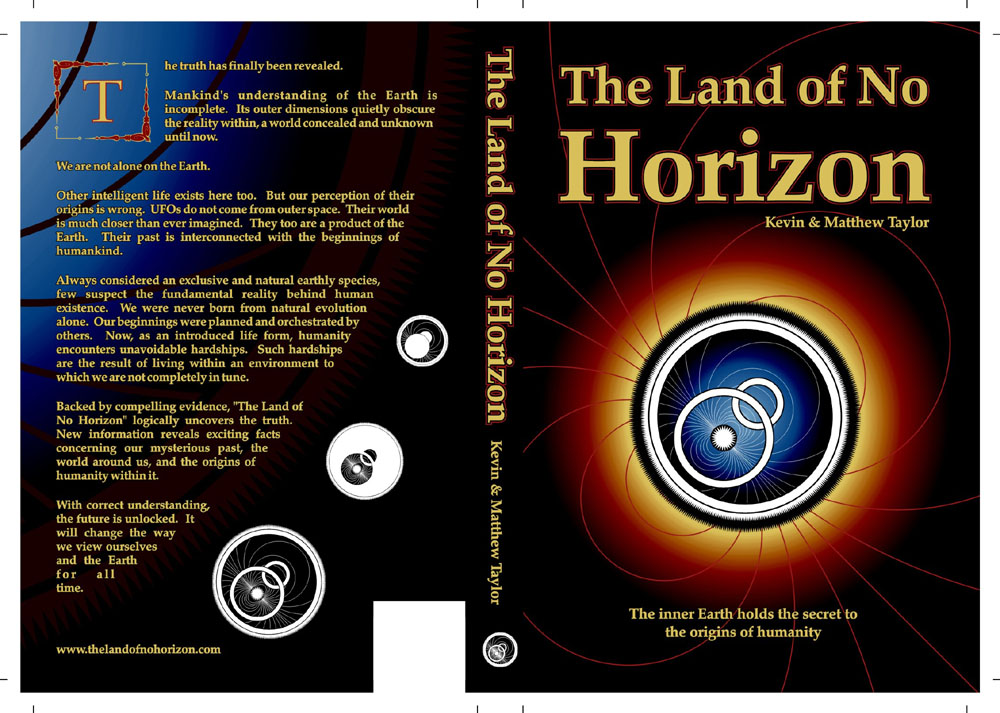A few months back I read the book ‘The land of no horizon’ (ISBN: 978-0-646-41057-9, 2001) written by Kevin J. Taylor and Matthew J. Taylor, a father and son team, who researched on this project for 12 years before authoring this very logical and greatly explanatory (with numerous simple illustrations) book. This book marries two controversial and now almost-discredited theories, ‘expanding Earth’ (vs. universally accepted theory of plate tectonics) and ‘hollow Earth’ (vs. the universally accepted inner core-outer core-mantle-crust model). These two theories have been shown to have severe flaws in them when considered by themselves. However, this book does a fantastic job of entwining these two theories to produce a logically sound hypothesis of “expanding hollow Earth” with its inner Sun. I am not a geologist to give an expert opinion on whether this hypothesis can be considered as a valid theory. However, as a scientist who thinks logically, most of the arguments, explanations and examples that are put forth in this book seem very plausible.
The authors don’t just stop at proposing this new model for Earth’s geology. What impressed me most about this book is the fact that using this theory, the authors have successfully (in my humble opinion) explained historical/mythical and scientific phenomena. They show us (through simple text and illustrations) how the imbalance between inner and out atmosphere and oceans would cause (and thus explain) the ancient, cataclysmic deluge mentioned in various religious texts that wiped out the mankind from the face of Earth. In fact, going back a step, they explain how the life on inside of the Earth would progress more rapidly than the outside and therefore, how WE could be the hybrid between primitive apes on the outside and intelligent beings on the inside. The name of the book is what the inside Earth would be, the land of no horizon! The authors also go on to explain (and are reasonably successful at) some astronomical observations such as the “red spot on Jupiter” with help of the same “expanding hollow planet” hypothesis applied to gas planets (like Jupiter, Saturn etc.).
The upside of the book is its simple, layman language and absence of unnecessary scientific and technological jargon. In addition, large number of simple and neat illustrations would make this book very readable and understandable to anyone who is able to think logically and ready to face unconventional, new ideas without prejudice. One downside of the book, I thought, was that it starts out in a fashion which leads you to believe its going to explain much more (e.g.: UFO observations) than it actually ends up doing. However, what it does explain is definitely significant.
The authors (following the new age trend) have started their own website to further promote and continue research on this topic. The website is very informative as well, with the blog having articles about earlier (and failed) hollow Earth theories, information about the authors, overview of the book, Expanding Earth animation etc. This is what the website has to say about the theory/book, “The Expanding Earth idea has been around for a long time, but science has not considered it worthy of genuine investigation because a driving force was missing. This is where the Hollow Earth theory comes in. A new understanding of Gravity gives rise to an expanding, hollow Earth and once and for all neatly solves the drifting continent phenomenon.” All in all, whether it survives the serious scientific scrutiny in the end or not, the Expanding Hollow Earth theory is definitely something worth reading (and considering).

